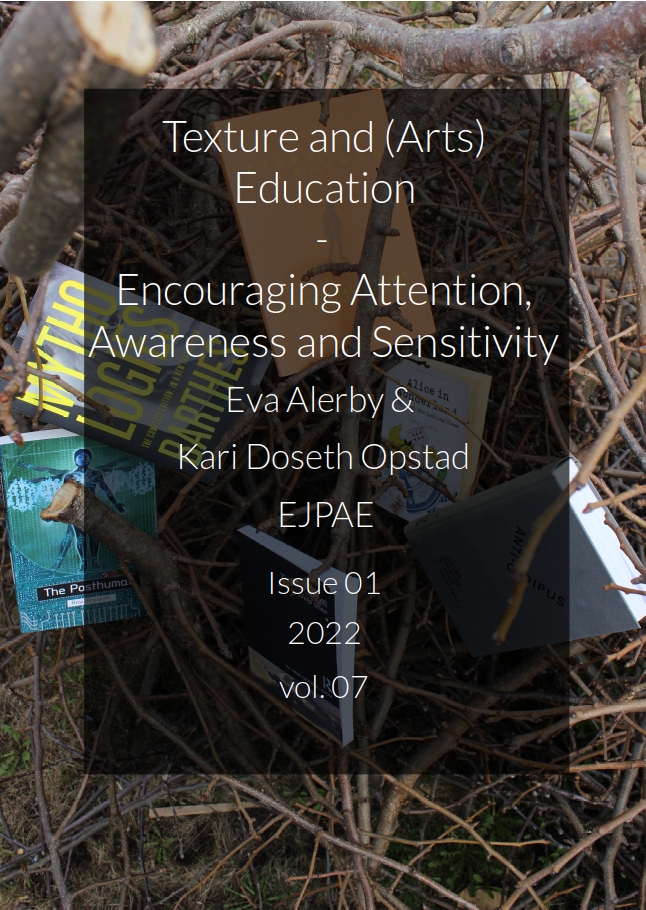Texture and (Arts) Education
Encouraging Attention, Awareness and Sensitivity
DOI:
https://doi.org/10.5281/zenodo.6536166Abstract
In this article, the complexities of the concept of texture and its relationship to (arts) education, here with a specific focus on attention, awareness and sensitivity, are explored and elaborated upon. Texture can be described simply as the visual and tactile character of surfaces, which covers both nature and culture and, indeed, much of life itself. The overall aim of the article is to explore the following: (i) (arts) education through the lens of texture; (ii) texture, education and the arts as they relate to bodily and sensory experiences; and (iii) texture and (arts) education in relation to silence, silent spaces and repetition. The ultimate goal is to develop theoretical and philosophical insights into diverse understandings of texture as they relate to (arts) education as a way to illuminate and sharpen the sentience and appreciation of its meaning and importance for students in the classroom. The article is theoretically founded on the thinking of the French philosophers Maurice Merleau-Ponty and Mikel Dufrenne. The ways in which texture, education and the arts are related to bodily and sensory experiences are outlined and discussed, which is followed by an exploration of silence, silent spaces and repetition as essential elements of both texture and education. The discussion is exemplified by a narrative, here in the form of a paradigmatic case, of students examining texture in the classroom. To conclude, texture encourages or elicits attention, awareness and sensitivity, all of which are of significance not only for (arts) education, but also for the formation of society—for the formation of our lives.

Downloads
Published
Issue
Section
License
Copyright (c) 2022 Eva Alerby, Karen Doseth Opstad

This work is licensed under a Creative Commons Attribution 4.0 International License.
EJPAE provides immediate open access to all its published content. Users do not need to register or pay to read content.
https://creativecommons.org/licenses/by/4.0/
Authors of content published in European Journal of Philosophy in Arts Education (EJPAE) retain the copyright to their works. Content is free to be used by anyone as long as you "[...] give appropriate credit, provide a link to the license, and indicate if changes were made. You may do so in any reasonable manner, but not in any way that suggests the licensor endorses you or your use." and "No additional restrictions — You may not apply legal terms or technological measures that legally restrict others from doing anything the license permits." (from the Creative Commons licence agreement)
EJPAE does not charge any author or publication fees.
Authors are encouraged to deposit the final published version of their article for self-archiving (author's personal website) and/or archiving in an institutional repository immediately upon publication.




